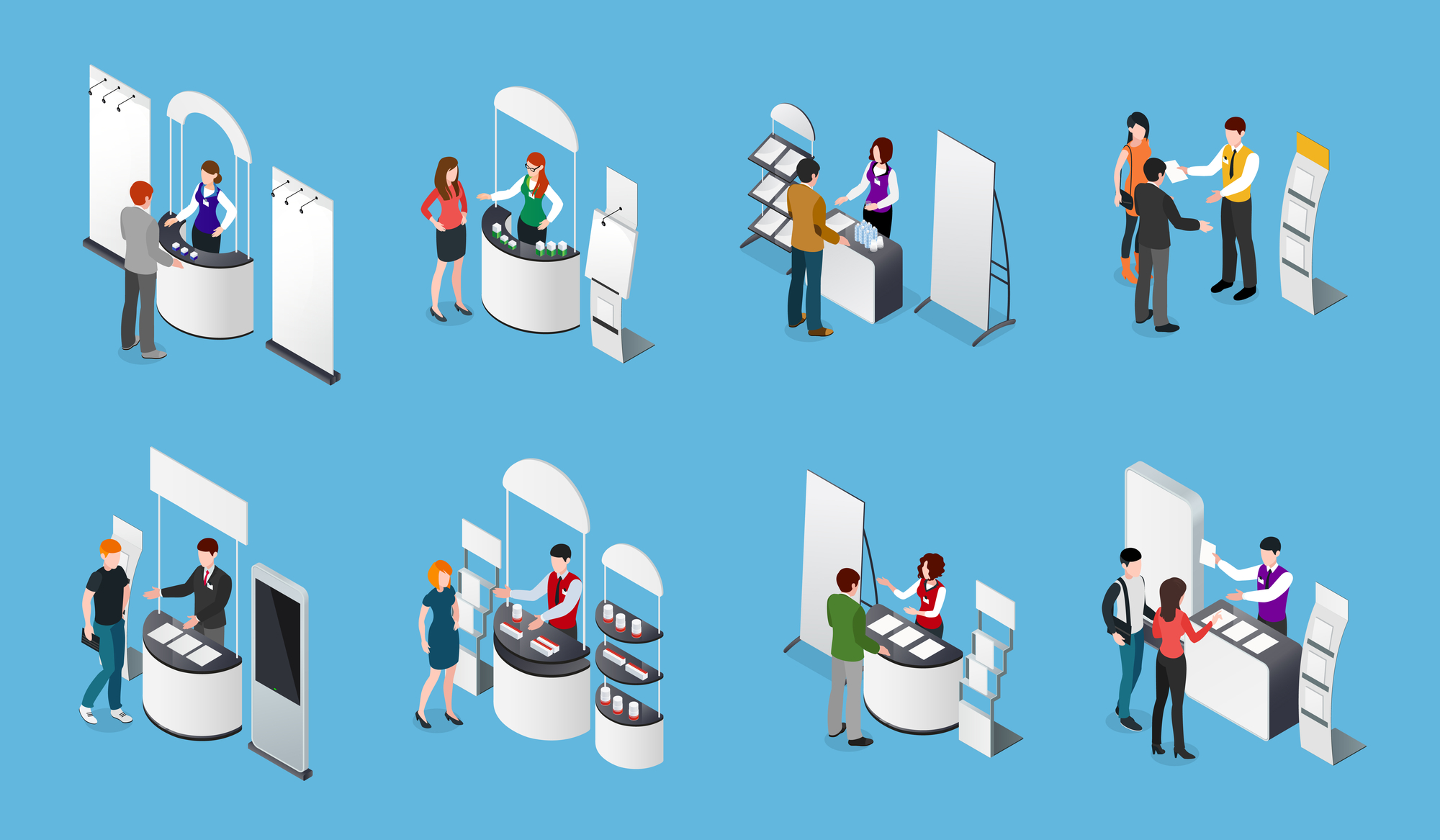
Getting More Bang for Your Buck at In-Person Trade Shows
By Cara Sloman, Force4 Technology Communications
When done right, trade shows provide the perfect platform for meeting new prospects, networking with former colleagues, contacts and industry partners. Trade shows are a great way to grow your business because they are relationship focused. As remote work continues to proliferate, these shows serve as an opportunity for industry professionals to meet face to face.
These events are a platform to help you understand the challenges your customers are facing and give you an opportunity to build the trust required to fuel future sales.
Setting up for success
Not every trade show is equal, so here’s how to pick which is best for you:
- Do an online search related to your industry – “manufacturing trade shows 2024” or “top cybersecurity trade shows,” for example. Once you find something interesting, check out the trade show’s website for more information.
- Contact show management to see if exhibiting in the show is right for you by obtaining previous show statistics (demographics, lists of previous years’ exhibitors and numbers of attendees from year to year).
- Research to find out what your competitors are attending or have attended in the past.
- Talk to your network to gain insights on the top-performing business-related shows and find out what was successful for them.
There are must-attends and hidden gems for each industry. For mobility and cybersecurity, it has to be Mobile World Congress, Black Hat and RSA Conference. These are centers of gravity that consistently attract investors, customers and partners, as well as media and analysts.
One that stands out in the “less heard of” camp from last year was HLTH (pronounced “health”), bringing together the entire health ecosystem, focused on health innovation and transformation. It was very well organized and enabled successful lead generation.
For maximum trade show success, pursue a before, during and after strategy. Pre-show marketing and promotion is a critical component to maximize your ability to achieve your goals and a positive ROI. This means getting the word out early to generate awareness, build buzz and set up meetings. Here are four ways to do that:
- Email marketing: with email updates to Inform customers and prospects announcing your participation in the event and highlighting any special promotions, onsite events or giveaways. Also, email offers an excellent opportunity to share news or updates about the company’s products or services.
- Social media: Share updates and teasers about the company’s trade show booth in social media channels. Create a dedicated hashtag for the event and encouraging your team and followers to use it when posting about the company or the show can help increase visibility.
- Paid advertising: Broaden your audience beyond the company’s existing network through paid advertising (such as Google Ads) to promote the company’s booth and drive traffic to the website or landing page.
- PR outreach: Engage with media and analysts on news planned for the show, interesting stories or customers to meet with onsite to generate pre-show buzz and increase visibility.
Boots on the ground
I’ve found four helpful strategies for standing out in the crowd. First is on-brand dressing. The trade show team should choose a look and all follow it. A study found that wearing company “uniforms” like this boosts brand recognition.
Second, think about alternative marketing tactics. These are the kind that cause a stir, garner free publicity and might even get you in a bit of trouble if you’re not careful – or maybe you don’t mind that! What are your differentiators, and how can you highlight them? The WePay stunt is a famous one to study and glean inspiration from.
Third, bring out the snacks. People love free stuff, and especially free food. Make sure the venue allows it, and then stock up on candy or bite-sized foods.
Fourth, invest in video. People expect it in this digital age, and a short, high-quality video can inform prospects while booth staff are busy with other visitors.
Now we move on to the importance of booth design. You want your booth to be the one everyone at the show is talking about. The booth design should be inviting and facilitate conversations, allowing your staff to talk with attendees, understand their needs and effectively showcase your products or services. Remember, your goal isn’t just to draw attendees to your booth but to leave them with a lasting impression long after the event.
Fun and interactive trade show booth ideas include an interactive photo booth, a wheel people can spin to win prizes, a virtual reality (VR) experience, a live music performance or hosted entertainment, and good seating.
Building leads
Your primary goal at a trade show is to build leads, so brush up on effective networking skills. Make the effort to connect on and off the show floor. You may be exhausted from being on your feet all day but press on and show up at relevant networking functions, receptions and dinners. This neutral ground is the perfect environment to meet people. No one expects to be sold to, so you’ll find conversations are more natural, and as you get to know people, you’ll end up talking about work because it’s a common topic between you both. To build trust, show up, be authentic and listen. Share situations in your own life. Exhibitions are an opportunity to get to know the people behind the brand.
Target your key contacts. Do the legwork ahead of time on who you want to meet and then walk the floor to see what captures your attention. For exhibitors, you want to be on the must-see list. Use eye-catching messages on invitations to customers and prospects whom you want to visit your booth.
Train your team to give off a positive vibe in your trade show booth; it’s essential for making your guests feel comfortable and welcomed. Your staff should be energetic and smart without looking like they are going to pounce on people. This will require training them before the event. Outline various scenarios and work through them with your team so they aren’t practicing on potential customers. Consider creating a manual or show handbook for your team as a refresher that can be done as part of the training.
Creating successful experiences
Identifying, planning for and navigating tradeshows is an evolving skillset. Using data analytics and AI in marketing and PR will help you understand preferences and provide customized content, networking opportunities, and recommendations. Use personalization in your pre-show marketing efforts, which will enhance the prospect’s experience and your overall chance at making connections that last. Choose the shows that best fit your business and use the time-tested tips outlined above to create a successful show experience for all involved.




